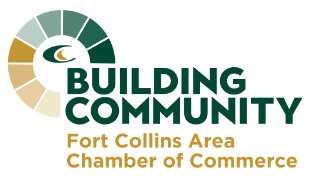North Interstate 25 has been a frequent topic in my columns in recent years. Congestion on the interstate is a daily irritation and the subject of conversations around dinner tables and water coolers — and Twitter, Facebook and every other social media outlet — in Northern Colorado.
Starting with the positive first, three significant projects totaling more than $270 million are underway on the most congested part of I-25, namely the section between Loveland and Colorado Highway 14 in Fort Collins.
A southbound climbing lane was built on Berthoud Hill. When it opened in December, a major bottleneck was fixed. Northern Colorado communities paid for that work.
The narrow bridges over the Crossroads Boulevard interchange in Loveland are being widened and should be done by the end of this year. Then, the big project will begin with an additional lane being built each way between Colorado 14 to Colorado Highway 402 south of Loveland. The contract for this work will be awarded this summer and construction will be done by the end of 2020.
Hats off to CDOT and local leaders such as Gerry Horak, Tom Donnelly, Barbara Kirkmeyer, Sean Conway and dozens of others who made these projects happen.
Less apparent, but also good news, is the awareness being exhibited by legislative leaders and the governor in the early weeks of the 2017 Colorado General Assembly. There is a tone of goodwill and community between the traditional partisan tribes on how to solve Colorado’s road crisis.
Based on published remarks and private conversations, Democrats and Republicans widely agree that Colorado roads must be fixed.
Exacerbating the problem is that since 2009, Colorado has not funded transportation from the state’s general fund (the “purse” of our state). Colorado has $9 billion of unmet transportation needs. In addition, CDOT is about $1 billion short of meeting needs for maintenance and capacity improvements.
Finally, state leaders are now committed to fixing the problem and finding a reliable transportation funding and financing solution.
However, being a former resident of Missouri — the Show Me State — proof, not happy talk, is what matters.
That’s where things get interesting. The political parties, clearly, do not see the world in the same way. For Democrats there is never enough money in the state’s general fund, while Republicans believe state government is flush with cash but wrong in its priorities.
A case can be made that both sides of the funding equation are right. Looking at the breadth and depth of Colorado’s transportation funding needs, Democrats have a point that using current funding alone won’t be the solution. Republicans are right in that the state budget has grown by billions of dollars over the past five or six years, but almost none of that money has gone to roads.
Here’s a modest plan:
- Put more money in the general fund for transportation over the next couple of years, and make a permanent change to state law to direct a portion of existing state sales tax to transportation.
- Use those funds to secure repayment of bonds and refer a bonding measure to voters (i.e. renew the expiring TRANS bonds program).
- Initiate serious negotiations between the two parties about new funding mechanisms.
As good as our progress has been on North I-25, it grinds to a halt if the Legislature fails to address Colorado’s overall transportation funding situation.
Originally published in the Fort Collins Coloradoan on January 27, 2017
